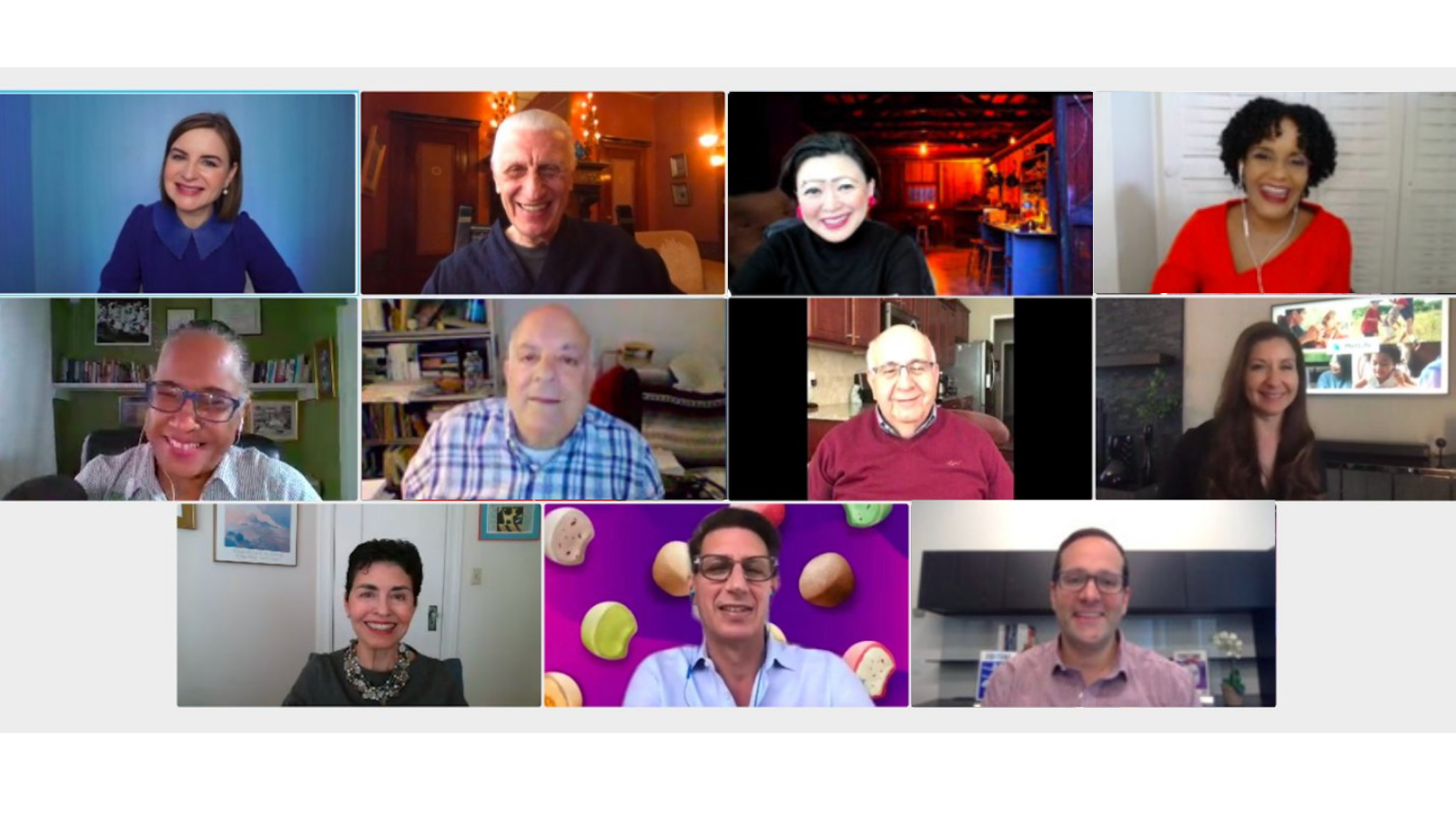On May 5th, I hosted the second Silver Economy edition of our Future of Branding series. I was joined by five marketing leaders and their parents or mentors to explore how well today’s brands understand and communicate with their Baby Boomer customers. (You can listen to our first Silver Economy panel here.)
From the civil rights movement and Vietnam War to the birth of the pill and the first man on the moon, this generation came of age during a period of intense political, social and cultural change—as well as remarkable economic prosperity.
Throughout our lively intergenerational conversation, we challenged assumptions about retirement, learned how marketers could communicate effectively without condescension and examined why building—and maintaining—trust is paramount among this demographic. To best serve this market, our concept of older consumers must be ambitious enough to reflect all aspects and versatile enough for this diverse generation to feel seen, heard and valued.
After hearing from their parents and mentors, I asked the CMOs for their learnings and their commitments as leaders to engaging this generation. Here’s what they had to say.
 We heard so many rich stories today, like new insights about retirement, so it’s not to be doubted that this is a generation that’s about to rediscover its relevance. There’s such a substantial amount of understanding that needs to occur to truly understand and be inclusive of this generation’s evolving needs. As marketers and brand builders, we can deliver on those needs, not just in our products and services but also in how we communicate and how we engage and build relationships, especially in this accelerated digital world.
We heard so many rich stories today, like new insights about retirement, so it’s not to be doubted that this is a generation that’s about to rediscover its relevance. There’s such a substantial amount of understanding that needs to occur to truly understand and be inclusive of this generation’s evolving needs. As marketers and brand builders, we can deliver on those needs, not just in our products and services but also in how we communicate and how we engage and build relationships, especially in this accelerated digital world.
We need to commit to having our products and services adaptable and flexible to meet the needs of customers moving through the different stages of life. When thinking about how this generation feels they are represented in advertising, are we communicating in a relevant way?
Now’s the time for brands to understand this generation’s new needs and digital use and engagement preferences so that we can build lasting relationships.
—Michelle Froah, SVP, Global Marketing Strategy and Sciences, MetLife
For me, it’s fortuitous that I’m here because I’ve been on a personal and professional journey with this generation for quite some time. We’re in financial services, most of our business is in the banking and investment space. Due to lockdown and quarantine, it’s been about digital transformation and how to support our clients by moving them into the alternative service delivery channels online and over the phone. In many ways, we’ve made a few missteps, and I’ve not only seen it from these conversations here today, making the assumptions that our boomers can easily make the switch. We have not taken the time to understand their journey.
On the personal side, I have the unfortunate privilege of supporting my terminally ill father and my mom, who’s caring for him. Being on the front lines with them, I recognize how some brands just don’t get it. There’s so much they don’t understand in supporting Baby Boomers at this stage in their lives. And so, it comes back to what I believe is my commitment—taking the time to understand the buying journey of this generation and recognizing they’re not homogenous by any means. We need to invest far more time and energy in understanding their personal journeys, understanding the buying journey, understanding their needs and the steps they have to take to fulfill those needs so that we can see them and deliver in a way that meets them.
—Kerry-Ann Betton Stimpson, CMO, JMMB Group Jamaica
There’s a lot of thoughtfulness, carefulness and a measuredness to how this audience has approached their decisions. It’s very deliberate in terms of either seeking information or looking to solve a particular need or problem.
One other thing that jumped out at me throughout the discussion was the personal nature that comes into play at some point during the decision-making process. It used to be word of mouth. In influencer culture, we look at it broadly as being very socially driven on different platforms. But in each of these stories, it was interesting to hear the personal aspect that came in—whether it was that customer service experience, the interaction with a salesperson or getting advice from family and friends. The personal element that accompanies their research and information-seeking process that these buyers are going on is fascinating.
At Fortune, we have a legacy business. We’ve been around for over 90 years with a magazine, but now, the vast majority of our business is digital and event-based initiatives. It’s a very different need set for our consumers, and one size does not fit all. My commitment is understanding how this audience needs to use our information and services differently than other generations or consumer groups might and keeping that in mind at our messaging and our outreach efforts, and of course, support.
—Michael Joseloff, CMO, Fortune
I always think of this generation as a generation that is very rich in experience as they have gone through a lot. And so, they are self-confident. As I was listening to the insights from the various panelists, a key theme for me is that they know what they want, and they will research before making a decision. And the way they do research is through various channels. It’s not homogeneous. Many people mentioned, they’re very comfortable going to the internet to research, but others find their information from newspapers or magazines while others ask for recommendations. The lesson learned here is that this group is very savvy about their decision-making process and how they get to that purchase.
As a brand leader, I’m committed to listening to this group and not making assumptions, especially in the technology world. It’s extremely important to listen not only during product development but also in delivery, and be intentional in our messaging and positioning in targeting this group.
—Sonita Lontoh, Global Head of Marketing, Personalization, 3D Printing and Digital Manufacturing, HP
I will tell you the one thing I wrote down that just scared me—we as marketers have no control. These folks have 100% control of what they’re looking for, how they’re willing to get it, what they’re prepared to tolerate and what works for them. Here is a group with a genuine interest in brand reputation and not interested in being transient. They became transient because of a need to wander off, not because they felt like they needed to try something different. Boy, what an opportunity. This idea of control is very much part of their core. They grew up in the homogenous 50s. The 60s were about being anti-establishment and reclaiming some of that control and ownership. In the 70s, they took that notion even further. This group says, “Treat me as an individual. Don’t forget about me. And by the way, you’re here because of me.” It was fascinating to listen how they took on the world and made it work for them.
At My/Mochi, we make a snack. We’re four bites, and you’re out. And one of the important things is we’re an experiential brand, first and foremost, and what we’ve always said is we’re an inclusive brand. We’ve always said, let’s talk to people who are empowered and enthusiastic about who they are and what they believe in. For us, it’s a matter of ensuring that we continue along with that messaging and never stray from that north star and give them the tools and the technology to let their voices be heard.
— Russell Barnett, MD + CMO, My/Mochi
Visit events.siegelgale.com to learn more about our Future of Branding series


